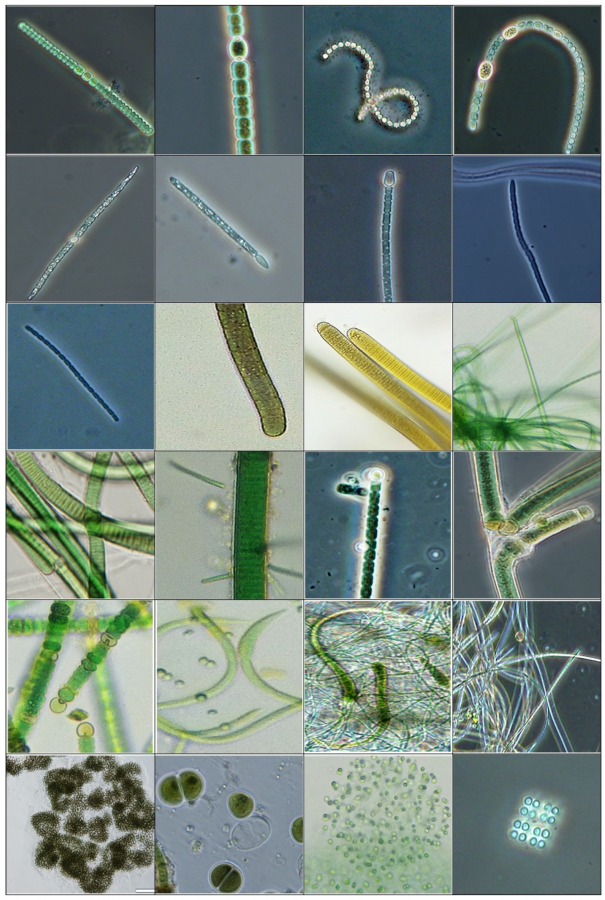NCCOS-sponsored scientists recently documented the occurrence of several, potentially harmful cyanobacteria and associated toxins at the land-sea interface along the southern California coast. Their newly published findings in the journal Toxins reveal a previously unrecognized, potential human health threat from cyanotoxins in our coastal waters, raising new concerns for recreation, harvesting of finfish and shellfish, and desalination operations.

Photomicrograph (10 -40x) collage of several cyanobacteria genera encountered in this study.Top row, from left: Anabena sp. 1, Anabaena sp. 2, Dolichospermum sp. 1, Dolichospermum sp.;Second row: Aphanizonemon sp., Cylindrospermopsis sp., Cylindrospermum sp., Leptolyngbya sp.;Third row: Pseudanabaena sp., Phormidium sp., Oscillatoria sp., Geitlerinema sp.;Fourth row: Lyngbya sp., Heteroleiblenia sp. orLyngbya sp., Nostoc sp., Tolypothrix sp.;Fifth row: Nodularia sp., Planktolyngbya sp., Calotrhix sp., Leiblenia sp.;Bottom row: Microcystis sp., Chroococcus sp.,Aphanocapsa sp., Merismopedia sp.Credit: A. O. Tatters, USC.
The research team, which includes scientists from the University of Southern California -Los Angeles, the Southern California Coastal Water Research Project, and the San Diego Regional Water Quality Control Board, surveyed over fifty brackish water sites in bays, coastal sloughs, and creeks leading to the sea. All sites had potentially toxic genera of cyanobacteria (see graphic at right), often in high abundances. Many sites had measurable concentrations of anatoxins, cylindro-spermopsins, microcystins, saxitoxins, and nodularians - cyanotoxins known to have potential for causing human illnesses.
This work highlights the need for further studies to better define human health implications and environmental impacts. The publication stems in part from an NCCOS Monitoring and Event Response for Harmful Algal Bloom (MERHAB) project that is developing new protocols for monitoring multiple toxins and encouraging their adoption by California coastal monitoring programs to aid in better understanding and mitigating impacts from this emerging harmful algae-related threat.
For more information, contact Marc.Suddleson@noaa.gov.
 Official websites use .gov
A .gov website belongs to an official government organization in the United States.
Official websites use .gov
A .gov website belongs to an official government organization in the United States. Secure .gov websites use HTTPS
A lock or https:// means you’ve safely connected to the .gov website. Share sensitive information only on official, secure websites.
Secure .gov websites use HTTPS
A lock or https:// means you’ve safely connected to the .gov website. Share sensitive information only on official, secure websites.